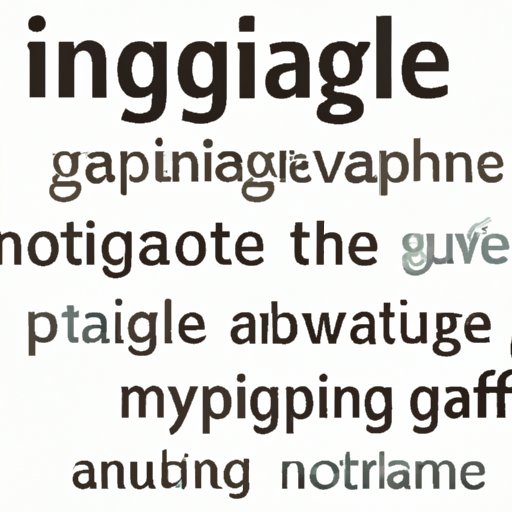Introduction
Figurative language is an essential tool for any writer looking to craft an engaging piece of work. By utilizing this type of language, authors can bring their stories to life and evoke powerful emotions in the reader. But what exactly is figurative language, and how can it be used to enhance writing? In this article, we will explore the power of figurative language to make writing better and delve into some creative ways to use it.

Examine the Power of Figurative Language to Enhance Writing
To understand the importance of figurative language in writing, let’s first define it. Figurative language is any type of language that describes something indirectly or uses words or phrases in a non-literal way. This could include metaphors, similes, personification, and analogies, among other types of figurative language.
Using figurative language in writing can have numerous benefits. For one, it can make writing more descriptive. By using vivid imagery and imaginative comparisons, writers can create a compelling image in the reader’s mind and bring the story to life. Figurative language can also help evoke emotions in the reader. By carefully crafting metaphors and similes, authors can paint a picture that resonates with the reader on an emotional level.

Exploring Creative Ways to Use Figurative Language in Writing
Now that we’ve established the power of figurative language to make writing better, let’s take a look at some creative ways to use it. One of the most common forms of figurative language is the metaphor. Metaphors are a great way to describe abstract concepts and ideas in a more concrete and relatable way. For example, you could use a metaphor to compare love to a journey, or sadness to a heavy weight.
Another form of figurative language is personification. Personification is when an inanimate object or concept is given human characteristics. This can be a great tool for characterization and can help to create a vivid image in the reader’s mind. An example of personification would be saying that the wind was “whispering secrets” or that the sun was “smiling down”.
Analogies are another type of figurative language that can be used to explain complex concepts in a simpler way. Analogies are often used to compare two different things, such as comparing love to a game or life to a rollercoaster. By using analogies, authors can make difficult ideas easier to grasp and communicate them in a more interesting way.
The Impact of Figurative Language on a Reader’s Experience
Figurative language can also have a huge impact on a reader’s experience. By utilizing vivid language, authors can create an engaging storytelling experience that draws the reader in and keeps them hooked. Figurative language can also help to paint a picture in the reader’s mind, allowing them to visualize the story and become immersed in the world the author has created.

How Figurative Language Can Make Writing Come Alive
In addition to helping to create a more engaging story, figurative language can also add rhythm and flow to sentences. By utilizing alliteration, writers can create a sense of musicality in their writing that adds an extra layer of interest. Hyperboles can also be used to add drama and humor to a piece of writing.
Analyzing Examples of Figurative Language in Famous Literature
To gain a better understanding of how to use figurative language effectively, let’s take a look at some famous examples from literature. William Shakespeare was a master of metaphor and his plays are full of creative comparisons. In Romeo and Juliet, he famously compares Juliet to the sun: “But, soft! What light through yonder window breaks? It is the East, and Juliet is the sun!”
Edgar Allan Poe was also known for his use of personification. In his famous poem “The Raven,” he gives the raven human characteristics such as “musing” and “nodding”. Ernest Hemingway was a master of the simile, and his novel The Old Man and the Sea is full of imaginative comparisons, such as “the stars were white and sharp like splinters of broken glass.”
Conclusion
In conclusion, figurative language is an incredibly powerful tool for any writer looking to create an engaging and memorable piece of work. From making writing more descriptive to evoking emotions in the reader, figurative language can have a huge impact on a reader’s experience. By exploring some creative ways to use it, such as metaphors, similes, personification, and analogies, writers can make their writing come alive and create a unique and captivating story.
(Note: Is this article not meeting your expectations? Do you have knowledge or insights to share? Unlock new opportunities and expand your reach by joining our authors team. Click Registration to join us and share your expertise with our readers.)
